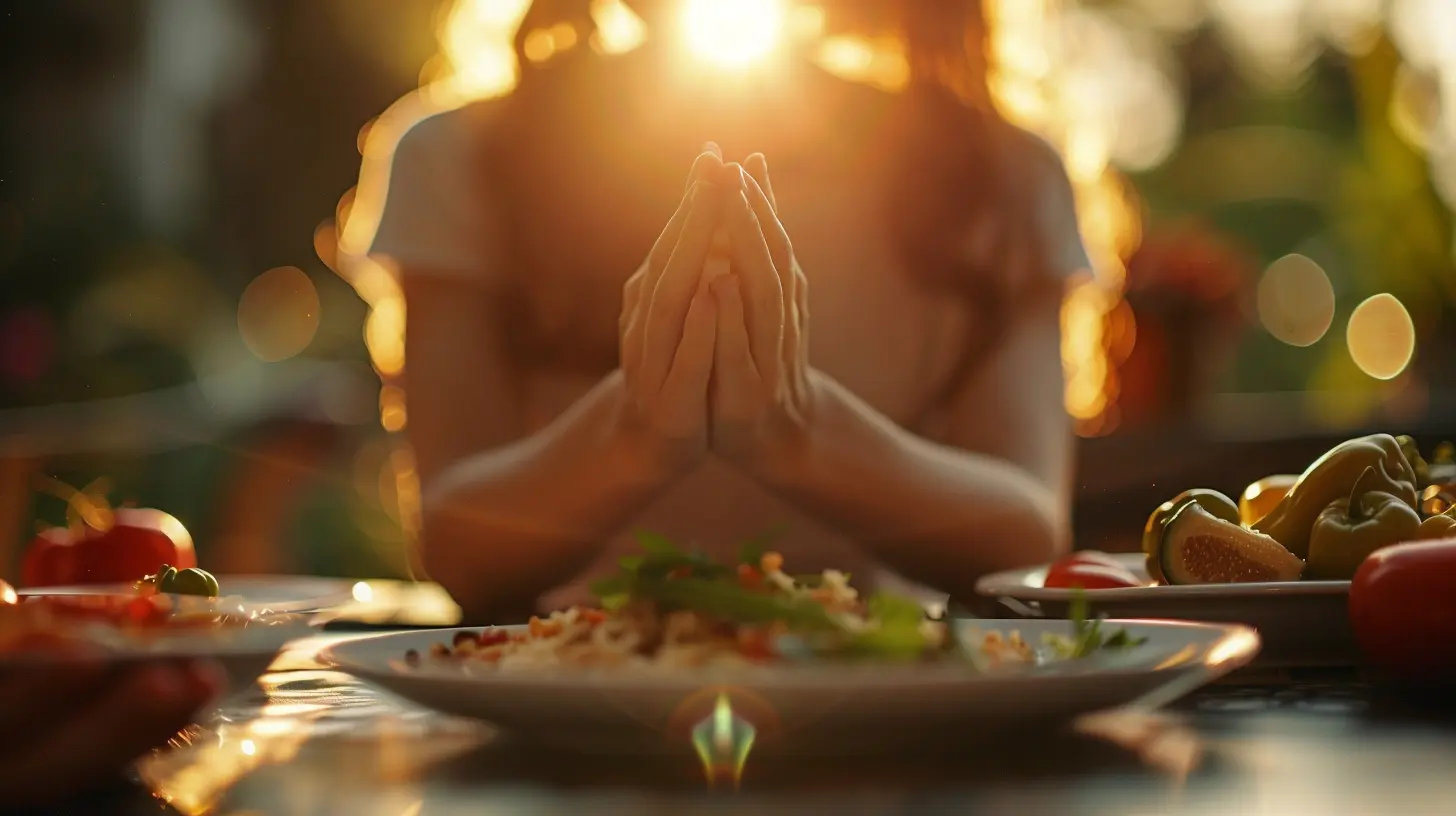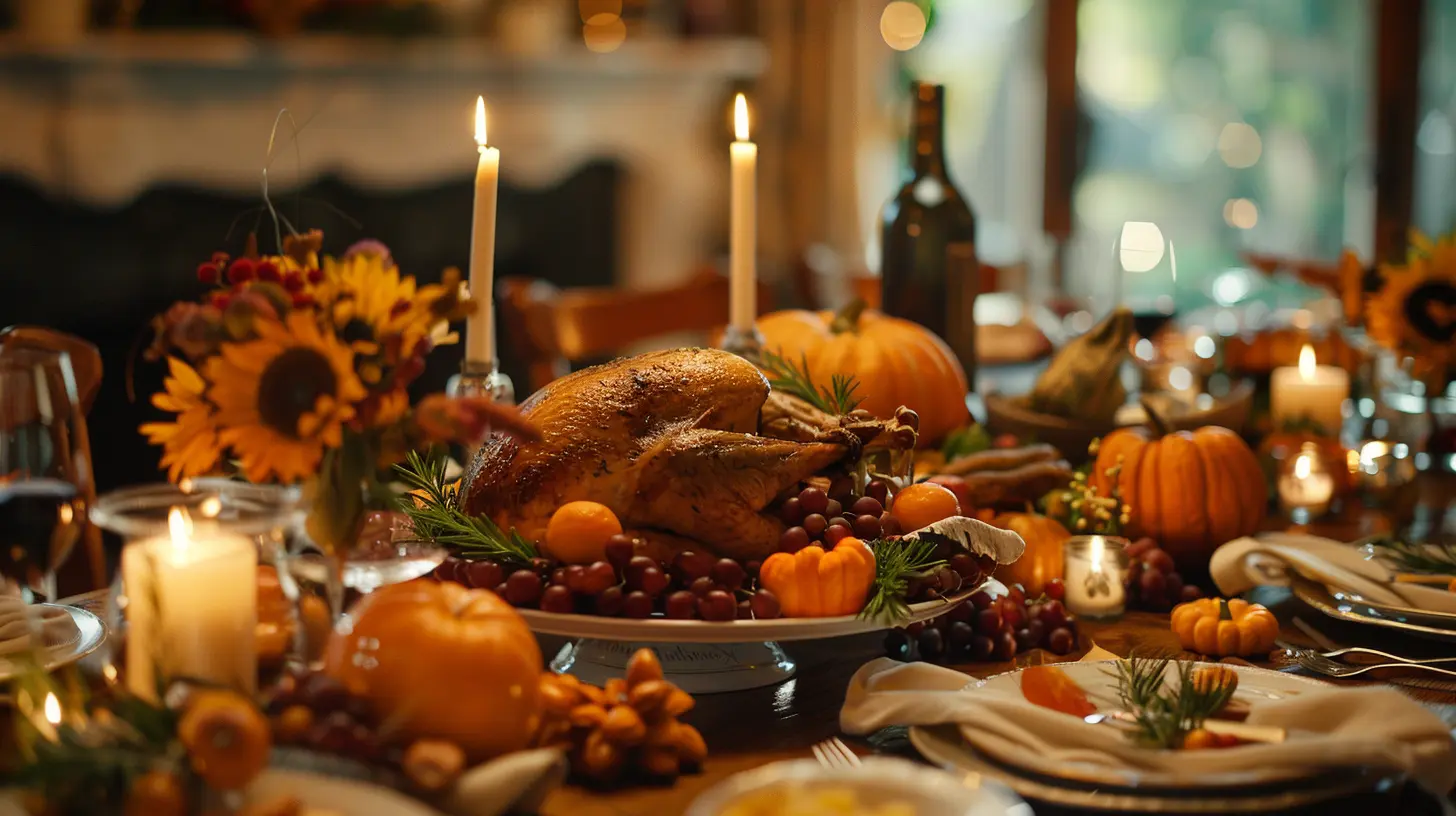Simple Strategies for Encouraging Gratitude at the Dinner Table
15 October 2025
Gratitude is one of the most powerful traits we can instill in our children. It fosters kindness, builds resilience, and helps create a positive outlook on life. But how do you teach gratitude in a way that feels natural and meaningful? The answer lies in one of the most sacred family traditions—the dinner table.
Dinnertime is more than just a chance to refuel; it’s an opportunity to connect, share, and reflect. By incorporating simple gratitude practices during meals, you can turn everyday dinners into powerful lessons in appreciation. Let’s dive into some easy yet effective strategies for encouraging gratitude at the dinner table. 
1. Start With a Gratitude Ritual
Establishing a gratitude ritual at dinner creates a habit that becomes second nature over time. It doesn’t have to be complicated—a quick moment of appreciation before eating can do wonders.Some Simple Ideas:
- Go Around the Table – Ask each person to share one thing they’re grateful for that day.- Write It Down – Keep a gratitude jar where family members can drop in notes of appreciation. Read them aloud once a week.
- Use a Special Plate – Have a designated "gratitude plate" for one person per night. Whoever has the plate shares something they appreciate.
These small habits make gratitude a natural part of the mealtime routine, reinforcing positive thinking and mindfulness. 
2. Model Gratitude Yourself
Kids learn best by example. If they see you expressing appreciation for small things, they’ll naturally follow suit.Instead of just saying, “Thank you for cooking,” take it a step further:
> “I really appreciate the effort that went into making this meal. The flavors are amazing, and I love that we get to eat together as a family.”
This type of gratitude shows sincerity and thoughtfulness. The more detailed your appreciation, the more children understand its depth. 
3. Encourage Storytelling About Gratitude
Stories stick with us far longer than simple statements. Instead of just listing things you’re grateful for, try transforming them into stories.Ask open-ended questions like:
- “Can you tell me about a time today when someone did something kind for you?”
- “What’s a moment from today that made you feel really happy?”
These prompts encourage deeper thinking and make gratitude feel real, rather than just another thing to check off a list. 
4. Play the "Gratitude Chain" Game
Turn gratitude into an interactive game to keep things fun and engaging. The "Gratitude Chain" game is a simple way to build on each other’s responses.Here’s how it works:
1. One person starts by saying something they’re grateful for (e.g., “I’m grateful for my warm bed”).
2. The next person must connect their gratitude to the previous response (e.g., “I’m grateful for my warm bed because it helps me sleep well”).
3. The chain continues, building off each other’s thoughts.
This game helps kids see how gratitude is interconnected. It also teaches them to find appreciation in things they might normally overlook.
5. Shift the Focus from "Things" to "Experiences"
It’s easy for kids to get caught up in material gratitude—being thankful for new toys, gadgets, or treats. While that’s fine, it’s even more valuable to emphasize gratitude for experiences and emotions.Encourage responses focused on moments and feelings, like:
- “I’m grateful for the time we spent playing outside today.”
- “I loved laughing with my friends at school.”
- “I appreciated how my teacher helped me understand something difficult.”
This shift helps kids see that the best parts of life aren’t always things you can hold but moments you experience.
6. Incorporate Gratitude-Inspired Questions
Instead of the typical "How was your day?" question (which usually gets a one-word answer), try adding some gratitude-inspired questions:- “What was the best thing that happened today?”
- “Did anyone do something kind for you today?”
- “What’s something you did today that made someone else happy?”
These types of questions guide children to recognize the good in their day, reinforcing a gratitude-focused mindset.
7. Reinforce Gratitude With Actions
Words are powerful, but actions drive the message home. Make expressing gratitude more than just talk—let it be something your family actively demonstrates.Ways to Put Gratitude into Action:
- Write Thank-You Notes – Encourage kids to write a quick note to someone they appreciate, whether it’s a teacher, friend, or family member.
- Show Appreciation for Service Workers – When eating out, make sure to thank the server and encourage kids to do the same.
- Give Compliments Freely – Expressing gratitude doesn’t always have to be about things received. A genuine compliment is also a form of gratitude.
The more your kids see gratitude in action, the more natural it will become for them.
8. Make Gratitude Fun with a "Thankful Jar"
A simple but effective visual tool is a “Thankful Jar.” Keep a jar on the dinner table along with small slips of paper. Each night, encourage everyone to jot down one thing they’re grateful for and drop it in the jar.Over time, this jar fills with heartfelt reminders of appreciation. On special occasions, such as holidays or birthdays, take time to read the notes together. It’s a powerful way to reflect on the abundance of good things in life.
9. End the Meal with a Gratitude Reflection
Just as it's beneficial to start the meal with a gratitude ritual, ending it with a simple gratitude reflection can leave a lasting impact.Try a quick closing statement like:
"I’m so grateful we could all sit together tonight and share this meal. It’s one of my favorite parts of the day."
This makes dinnertime about more than food—it transforms it into a moment of connection and appreciation.
10. Stay Consistent
Like any habit, gratitude takes time and repetition to become second nature. Commit to making it a regular part of your dinner routine. Some nights, it might flow effortlessly. Other nights, it might feel forced. That’s okay. What matters is persistence.Gratitude isn’t about perfection; it’s about making an effort every day to recognize and appreciate the good. And the dinner table is the perfect place to start.
Final Thoughts
Encouraging gratitude at the dinner table isn’t about forcing it—it’s about creating an environment where thankfulness thrives naturally. By incorporating simple rituals, engaging conversations, and leading by example, you can help your children develop a deeper appreciation for life’s blessings.In a world that often emphasizes what we lack, teaching kids to focus on what they have is one of the greatest gifts you can give. So, pull up a chair, pass the food, and start sprinkling a little gratitude into your family’s mealtime routine—one bite at a time.
all images in this post were generated using AI tools
Category:
Teaching GratitudeAuthor:

Max Shaffer
Discussion
rate this article
1 comments
Alanna McCallum
Why not turn dinner into a gratitude circus? Juggle compliments, toss around thank-you notes, and let the kids wear ‘thankful hats’! Who knew fostering gratitude could be this fun? Plus, it might distract them from the mystery casserole on their plates!
October 20, 2025 at 4:45 PM

Max Shaffer
What a creative idea! Turning dinner into a gratitude circus sounds like a fun way to engage everyone and foster appreciation while keeping the atmosphere light!


